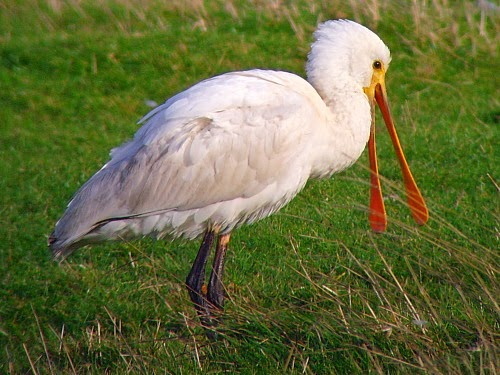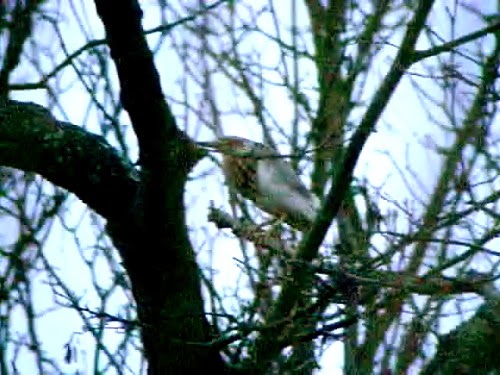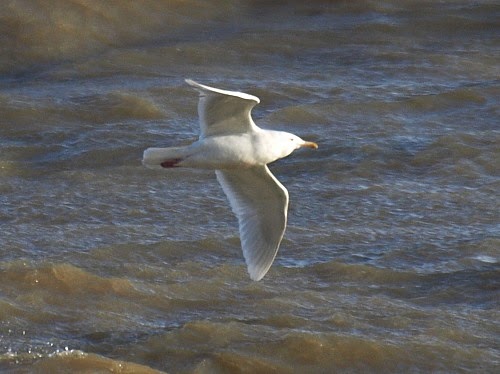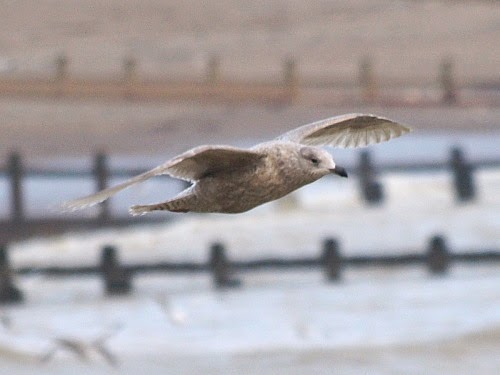Great Crested Grebe 2E
Gannet 25E, 82W
Cormorant 5E
Little Egret 1E along beach
Brent Geese 59E
Scaup 5E (2 drakes)
Eider 4E (2 drakes)
Scoter 13E
Curlew 2E
Oystercatcher 15E
Black-headed Gull 23E
Common Gull 30E
Mediterranean Gull 8E (7 adults 1 second-winter)
Lesser Black-backed Gull 1 on beach
Kittiwake 32E, 2W (only a single first-winter seen)
Guillemot 3E
Auk sp. 6E
Cuckmere
Spoonbill 1 first-winter
White-fronted Goose 3
Scandinavian Rock Pipit 3
First-winter Spoonbill in the Cuckmere
Eurasian White-fronted Geese in the Cuckmere
presumably a pair accompanied by last years offspring (right)
First individual
Second individual
Third individual
The obvious moult limit in its median coverts and narrower pale tips to its greater coverts render this a first-winter individual in contrast to the two adults above
Scandinavian Rock Pipit in the Cuckmere
The pockets of saltmarsh alongside the River Cuckmere are reliable locations for this form and these three were located feeding together over a mile and a half from the coast. We considered all three had commenced their pre-breeding moult into summer plumage to varying degrees whereas A.p. petrosus hardly
undergoes any spring moult (Vans Duivendijk 2010). All three were attaining a grey cast to their crown, nape
and scapulars. Their supercilia appeared both pale and strong especially when
viewed head-on (being most apparent on the first adult to least apparent on the first-winter individual) and flared behind the eye on the two adults. Their underparts are taking on a spotted appearance against a
whitish ground colour and the first individual was developing a pinkish suffusion across its breast being most apparent when viewed head-on. All three were losing their malar stripes. The fresh set of tertials visible on the second adult individual are a further clue to its form as littoralis frequently renew them as part of their pre-breeding moult whereas petrosus typically don't moult any wing feathers - Alstrom & Mild (2003) only saw a single specimen of petrosus that had renewed just its central pair of tertials. Additional
support for their identification as littoralis is provided by the
extensive yellow bases to their lower mandible, broad white tips to their
median and greater coverts and their white outer tail
feathers. Whilst the first individual bears a superficial resemblance to a Water Pipit it shows a dull brownish-grey rump and retains the diffuse, blurred, broad streaking to its sullied flanks and underparts.













































































